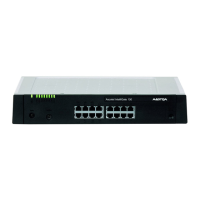System Functions and Features as of I7.9
Features 395
syd-0200/3.0 – I7.9 – 11.2009
If B is making an exchange all, Silent intrusion will only work if this feature is also en-
abled for exchange calls, throughout the system.
Notes:
– In connection with the Silent intrusion feature, relevant national data
protection regulations must be observed.
–One Silent Intrusion licence is required to be able to use the Silent intru-
sion feature.
– Silent intrusion is not possible in all cases and in certain cases may
cause a crackling sound (see Tab. 220).
– Analogue terminals cannot switch directly from the Silent intrusion
state to Intrusion. The microphone is always active with these termi-
nals.
Connections overview
Silent intrusion is not possible in all cases and not absolutely silent. For IP-IP, IP-SIP
and SIP-SIP connections, the media is switched directly and not via the system. In
these cases the connection must first be fetched into the system for the intrusion,
causing a faint crackling. Prerequisites for this procedure are sufficient VoIP licenses
and DSP resources.
Tab. 220 Silent intrusion: Connections
Intruding terminal
Existing connection combination AD2, DECT, IP, a/b ISDN, SIP
External (ISDN, a/b) — internal (any) Silent Not possible
External SIP — internal (AD2, DECT, ISDN, a/b) Silent Not possible
External SIP — internal (IP, SIP) Audible crackling Not possible
Internal (IP, SIP) — internal (IP, SIP) Audible crackling Not possible
Internal (AD2, DECT, ISDN, a/b) — internal (AD2, ISDN, a/b, IP,
SIP)
Silent Not possible
Internal (DECT) — internal (DECT) Not possible Not possible
External (any) — external (any) Not possible Not possible

